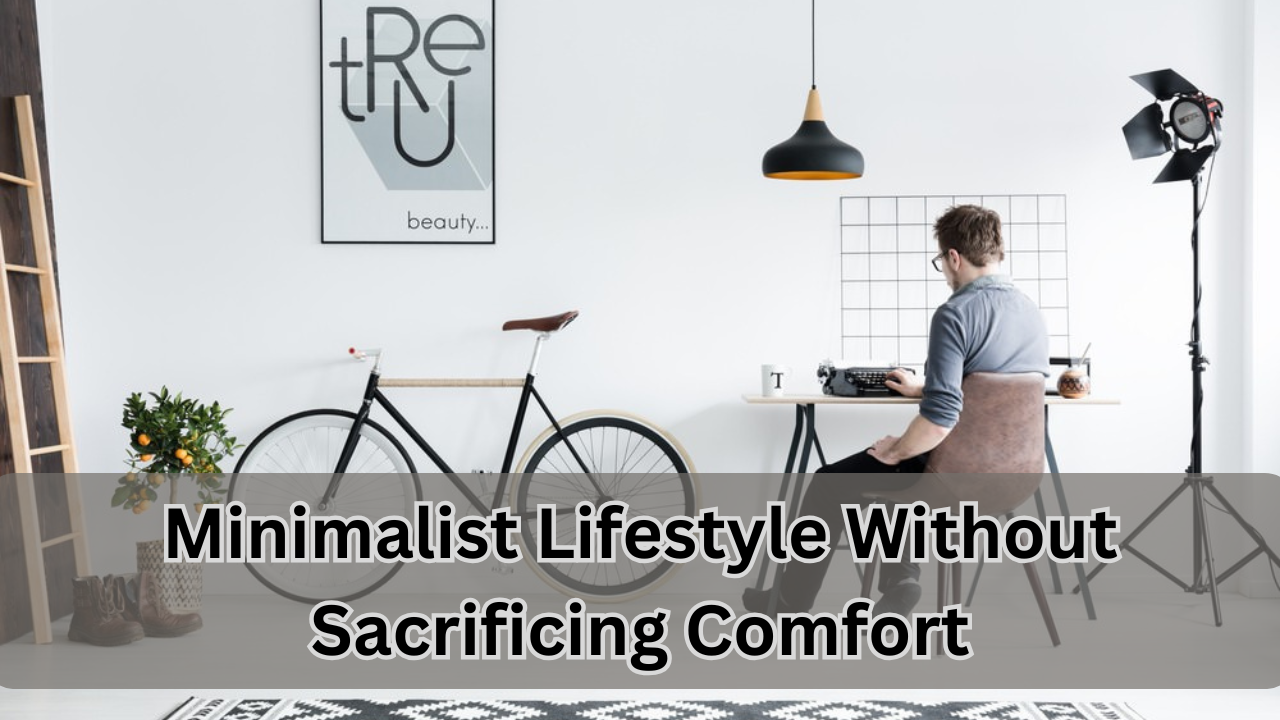Reducing clutter is only one aspect of minimalism it’s a way of thinking that emphasizes living purposefully and finding happiness in the little things. The idea that minimalism means sacrificing comfort or living with only the necessities is a common misconception but this is not at all the case. The goal of true minimalism is to live a life that upholds your morals improves your well-being and frees you up to concentrate on the important things.
By prioritizing quality over quantity and reducing unnecessary distractions, you can design a minimalist lifestyle that aligns with your preferences while retaining a sense of comfort and ease.
Defining What Comfort Means to You:
Everybody has a different subjective definition of comfort. Some people may define it as having comfortable furnishings and a homely atmosphere while others may define it as having the financial means to follow their passions and interests. Determining your personal definition of comfort is the first step towards designing a minimalist lifestyle without compromising on comfort.
Take time to reflect on the elements of your life that bring you genuine happiness and a sense of ease. These could include cherished possessions, meaningful relationships, or even simple daily rituals like enjoying a morning coffee in peace. By defining your version of comfort, you can tailor your minimalist approach to meet your unique needs.
Decluttering with Intention:
Decluttering which is a fundamental component of minimalism does not entail discarding everything you own. Rather its about consciously assessing your possessions and determining which things complement your life. To start group your belongings into categories and evaluate each one according to its practicality sentimental worth or capacity to make you happy.
Rather than focusing solely on elimination, consider how each item contributes to your comfort and well-being. Keep those that enhance your daily life and let go of anything that creates unnecessary stress or clutter. This process not only clears physical space but also helps create mental clarity and a sense of calm.
Embracing Quality Over Quantity:
One of the key principles of minimalism is prioritizing quality over quantity. When you focus on owning fewer but higher-quality items, you enhance your overall experience without feeling deprived. This applies to everything from clothing and furniture to kitchenware and technology.
Purchasing well-made long-lasting items guarantees that they will continue to be comfortable over time. A set of ornamental pillows for instance might not be as good of an investment as a cozy well-made mattress. In a similar vein picking clothes that work for a variety of settings can streamline your wardrobe without sacrificing fashion or usefulness.
Designing a Comfortable Living Space:
Your comfort and sense of well-being are greatly influenced by your home environment. A minimalist living area doesn’t have to be empty or sterile it can be cozy welcoming and uniquely yours. Make an effort to incorporate elements that make you happy into a layout that feels airy and uncluttered.
Use neutral colors, natural materials, and soft lighting to cultivate a soothing atmosphere. Incorporate a few meaningful decorations, such as family photos or artwork, to add a personal touch. By curating your living space thoughtfully, you can achieve a balance between simplicity and comfort.
Practicing Mindful Consumption:
Beyond your material belongings minimalism also encompasses your lifestyle and habits. Being deliberate about what you bring into your life whether it be new experiences commitments or possessions is known as mindful consumption.
Before making a purchase, ask yourself if the item truly adds value or fulfills a specific need. Avoid the trap of impulsive buying by focusing on long-term satisfaction rather than short-term gratification. This approach not only aligns with minimalist principles but also helps you save money and reduce waste.
Balancing Minimalism with Flexibility:
Remember that there is no one-size-fits-all definition of minimalism. Some people find comfort in holding onto sentimental or useful items while others thrive on having very few possessions. The secret is striking a balance that suits you.
Allow yourself to change your minimalist lifestyle to suit your changing needs and situation. In one aspect of your life like your living area you may prioritize comfort but in another like your wardrobe or schedule you may take a more minimalist approach.
Reaping the Benefits of Minimalism:
A minimalist lifestyle has many advantages such as less stress better concentration and more financial independence. You make room for significant experiences and personal development by getting rid of extraneous things and concentrating on what really counts.
You’ll probably gain a fresh appreciation for the things you already have as you simplify your life. This change in viewpoint makes you more appreciative and makes you feel happier with less. Furthermore, the time and effort you save by clearing out clutter can be put back into pursuits and connections that make you happy and fulfilled.
Conclusion:
Creating a minimalist lifestyle without sacrificing comfort is entirely achievable when approached with intention and self-awareness. By defining what comfort means to you, decluttering mindfully, and prioritizing quality over quantity, you can enjoy the benefits of minimalism while maintaining a sense of ease and satisfaction? Remember, minimalism is not about deprivation; it’s about living in alignment with your values and designing a life that supports your well-being.
